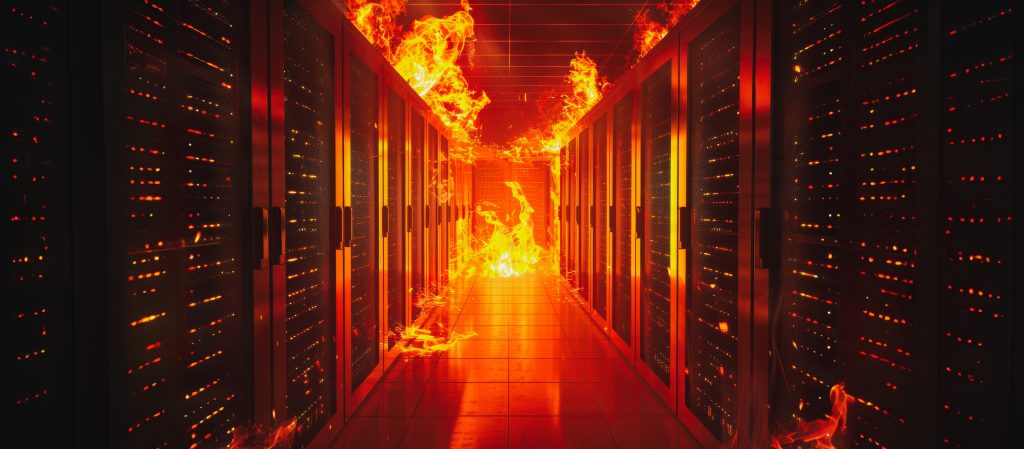Fire stopping in Data Centre is a critical safety measure designed to prevent the spread of fire, smoke, and toxic gases within the facility. Given the importance of continuous operation and the sensitive equipment housed in Data Centres, effective fire stopping is essential to minimize damage, protect personnel, and ensure business continuity.

Some Key Aspects of Fire Stopping in Data Centres are:
Purpose – Fire compartments are created within the Data Centre to contain potential fires to a specific area, preventing it from spreading to other parts of the facility.
Methods – Use of fire-resistant walls, floors, and ceilings. Each compartment is designed to limit the spread of fire for a certain period, typically ranging from 30 minutes to several hours.
Purpose – These materials are used to seal penetrations (e.g., cables, pipes, and ducts) that pass-through fire-rated walls and floors.
Materials – Common fire-stopping materials include fire-rated sealants, intumescent wraps, collars, and fire-resistant pillows. These materials expand when exposed to high temperatures, filling gaps and maintaining the integrity of the fire barrier.
Purpose – Data Centres have extensive cabling systems, and cables often penetrate fire-rated walls and floors. Correct cable management is crucial to ensure that fire-stopping measures are effective.
Implementation – Use of fire-rated cable trays and pathways and ensuring that cable bundles passing through fire-rated walls are properly sealed with approved fire-stopping products.
The aim of the Proactive team is to work in partnership with the Data Centre construction company to ensure the building is managed in terms of particulate matter, and best cleaning practises are adopted.
Purpose – Heating, ventilation, and air conditioning (HVAC) systems in Data Centres can also be a pathway for fire and smoke. Fire dampers and smoke dampers are installed in ductwork to prevent the spread of fire and smoke through these systems.
Methods – Automated systems that close the dampers upon detection of fire, isolating affected areas.
Purpose – Fire-stopping systems require regular inspections to ensure their effectiveness over time.
Processes – Routine checks to identify any breaches in fire barriers, degradation of materials, or improper installations that could compromise fire safety.
Purpose – Fire-stopping is part of a broader fire protection strategy that includes early fire detection (e.g., smoke detectors, VESDA systems) and fire suppression systems (e.g., gas-based suppression systems like FM200, NOVEC 1230).
Strategy – Effective fire stopping works in conjunction with these systems to provide layered protection, ensuring that fires are quickly contained and extinguished with minimal impact on operations. Please note, upgrading fire-stopping systems in existing Data Centres can be challenging, particularly in facilities with older infrastructure.
In summary, Effective fire stopping in Data Centres is a vital component of the overall fire protection strategy, ensuring that any fire-related incidents are contained quickly to protect both the equipment and the operational integrity of the facility.
Due to the industry’s secrecy, there’s no doubt that there are Data Centre fire incidents that did not make the news, so, while Data Centres operate with the best equipment and technology, Data Centre fires can always occur. According to the Uptime Institute, there have been 25 Data fires in recent history.
Don’t chance fire strategies, ensure that fire-stopping solutions meet local building codes and international standards.

Operations Director, Critical Facilities Solutions LTD
